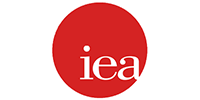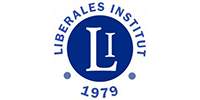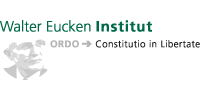Strategy, Independence, and Governance of State-Owned Enterprises in Asia
Paper was first published in the ADBI Working Paper Series, No. 986 in August 2019
Abstract
New public management emphasizes the organizational and behavioral aspects of state-owned enterprises (SOEs). The main assumption is that, if governments constitute SOEs as “market” enterprises and allow their management to follow the logic of the “market,” SOEs will become productive, innovative, and customer-oriented. This paper claims that, although new public management is a necessary condition, it is not sufficient for guiding (or reforming) SOEs. Strategic guidance from the owner (i.e. the state) as well as independence from the government have to complement it. The strategic guidance that the owner gives to an SOE has to address several areas of guidance. Ideally, it parallels the ownership strategies that are typical of more mature family enterprises. On the other hand, once the ownership strategy is in place, SOEs have to maintain their independence from the government, that is, its owners, to avoid co-option from political goals or short-term deviations from the strategy.

Introduction
State-owned enterprises (SOEs)—refer to section 1 below for a definition—are important, especially in an Asian context. According to Fortune Magazine’s (2018) 500 list, three out of the world’s top-10 largest companies by revenues were Chinese SOEs: State Grid (rank 2), Sinopec (rank 3), and China National Petroleum (rank 4). Depending on the degree of direct and indirect government support, the next five ranks contain at least a group of near-state enterprises—near-state meaning companies in which the state either is a minor shareholder or has an institutionalized stake: Royal Dutch Shell, Toyota Motor, Volkswagen, BP, and Exxon Mobil. This only leaves two of the world’s ten largest companies neither belonging to nor being backed by the state, Walmart (rank 1) and Berkshire Hathaway (rank 10).
Adopting an even more restrictive understanding, SOEs—companies of which the state is the majority shareholder—account for around 25% of the Fortune 500 entries by number of companies. Around 15% of them are in the People’s Republic of China (PRC), 5% are in other Asian countries, and 5% are in the rest of the world. Following the same criterion, in the list for the year 2005, SOEs constituted only about 6% of the total.
SOEs not only seem to be important as an economic phenomenon; they also seem to be especially relevant to economies in Asia. Some SOEs are not only economically important but also play other, non-economic roles, like attracting, fomenting, and diffusing knowledge and education or securing the political interest of the state. In recent years, successful SOEs have served as symbols of the (re-)emergence of many Asian economies.
On the other hand, there are concerns about SOEs’ governance structures. The Organisation for Economic Co-operation and Development (OECD) published its Guidelines on Corporate Governance of State-Owned Enterprises as early as 2005, most recently updating them in 2015 (OECD 2015). In a 2016 report, the same organization cautioned governments to strengthen their governance standards in SOEs (OECD 2016a). In 2017, the OECD again reminded governments that SOEs could lead to remarkable distortions and to unfair competition (OECD 2017). In 2018, the OECD compared different practices on the governance of SOEs around the globe. It insisted on the need to strengthen monitoring and reporting mechanisms (OECD 2018a). In another report, it identified the independence of boards as success factors in the performance of SOEs (OECD 2018b), and, in yet another, it highlighted risk management as elemental (OECD 2016b).
However, not only international organizations but also state agencies are paying attention to the governance structure of SOEs. An example of national evaluation—in the “East” and the “West”—is the PRC’s State-owned Assets Supervision and Administration Commission (SASAC), which is advancing an agenda on the reform of …
Continue reading ->
adb.org/sites/default/files/publication/517686/adbi-wp986.pdf
Henrique Schneider is a professor of economics at the Nordkademie University of Applied Sciences in Elmshorn, Germany and chief economist of the Swiss Federation of Small and Medium Sized Enterprises in Berne, Switzerland. The views expressed in this paper are the views of the author and do not necessarily reflect the views or policies of ADBI, ADB, its Board of Directors, or the governments they represent. ADBI does not guarantee the accuracy of the data included in this paper and accepts no responsibility for any consequences of their use. Terminology used may not necessarily be consistent with ADB official terms.
The ADBI Working Paper series is a continuation of the formerly named Discussion Paper series; the numbering of the papers continued without interruption or change. Asian Development Bank Institute’s working papers reflect initial ideas on a topic and are posted online for discussion.
































